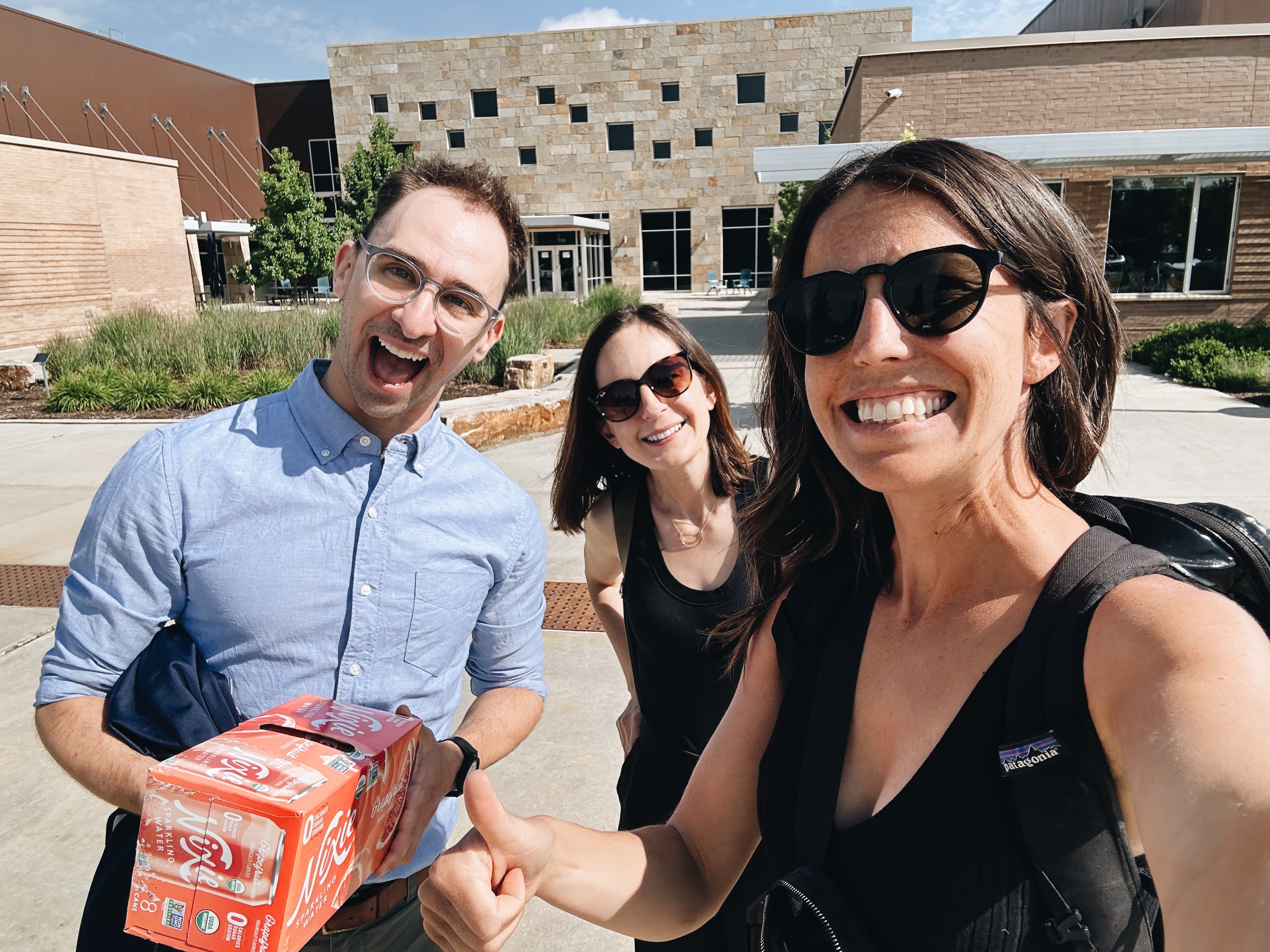Interested in a deep dive into how we do the work we do in order to supercharge your organization? Check out the Accelerator today.
Want to get in touch? Email sam@opentent.com
You know how on cooking shows they have all the ingredients laid out in these neat little glass bowls, pre-measured, pre-chopped, ready to go? That kind of prep is called mise en place - French for "set in place." It means that when you're cooking you can stay in the flow of combining ingredients, adjusting temperature, and tasting. You don't have frantic moments of panic-searching for garlic only to discover you're fresh out. Not that that's ever happened to me personally or anything.
Mise en place takes a whole lot of extra time up front, before you even turn the stove on. It uses up extra dishes, all those little bowls. It can feel like a daunting investment of time and energy. It's easy to overlook since it's likely that we'll find the garlic when we need it and might as well just start cooking now.
But if you really do it, cooking becomes easier and more JOYFUL. Your mind is confident. Your body is relaxed. You know you have what you need, available and ready. Your heart can engage with what's in front of you.
We were thinking about this concept the past couple weeks during the course of an internal consulting engagement. We spent a while walking through a scoping process, which involves facilitating the client team to describe all the elements of what they would like the project to entail, on individual, color-coded sticky notes. The result is a visual structure which has been co-created by client and consultant, detailing the parameters of the work ahead, created experientially and agreed upon by all.
The process is slow: two hours is a very short amount of time to complete it. We tested it out last week with two different scoping meetings with clients. One took 45 minutes and the other was 60 minutes long. Neither was nearly enough time for the activity. On top of that time, we asked the client to do some homework (finishing some language on the whiteboard) before our next meeting.
What comes out in these scoping discussions is a sense of surprise and wonder. We’ve heard reactions like:
- "Oh wow, there is actually a lot to talk about with this!"
- "I didn't realize you thought that thing was a part of this project. To me, that feels like something totally separate. Why do you think it should be included here?"
- "We're less clear on what we need than we had thought we were. We need to bring in three other people who will be affected by this conversation so they can help us clarify the requirements."
This kind of scoping process takes a while. It can be frustrating. Clients often want to just get started. Despite this, it's vital to take this time.
Almost all the painful moments of our consulting work could be resolved through comprehensive scoping up front. We align on deliverables through the process of co-creating scope. We ask the client to write out what they are asking for, and then share that visual with them throughout the project so there is a record of it. In other words, we are able to generate a detailed, intuitive and shared map of the territory we are navigating together. The downstream effects of urgent and emergent requests on our consulting capacity can be made tangible by showing how those requests must fit onto the whiteboard and will therefore necessitate a change in expectations.
Here's what applying mise en place looks like in our consulting work:
- We define and prioritize ‘prep work’. This includes scoping and alignment, laying out all the necessary ingredients before getting our hands dirty.
- We communicate the importance of this practice to our clients. We explain: "We're doing this because we want to avoid a situation where we realize we haven't fully established a shared understanding with you and the gap in our understanding comes out only right before the project is due."
- We ask the client to join us in this early prep work, because we want them to embrace our philosophy: preparation leads to alignment, and alignment leads to joy.
- We establish that we are not vendors selling a product. We are co-creating a product along with them. Deciding what we're actually doing, how we're doing it, when we're doing it, and who's involved: that’s the work.
Mise en place is not typically used for making simpler recipes which don't involve heat (like salad dressing). It becomes crucial for complex, fast-moving recipes. In our world, this means implementations, data migrations and third-party integrations. We use this distinction to help our clients understand why certain projects require more prep time than others.
Tools are part of the mise en place process. In the same way we require bowls, kitchen and counter space while preparing our dishes, so too we need to make sure we invest in the tools to facilitate ample and joyful preparation time. In our work, these tools are:
- Software like Miro, TaskRay and Google Docs, which help us structure and execute our projects
- Documentation in Guru, so our whole team can follow consistent and agreed-upon steps
- Balanced workloads and enough time in our days to settle into preparing
We’d love to hear your thoughts on this! Have you tried applying mise en place in your kitchen (or work) before? Or if you haven't, and this post inspires you to do so, we’d love to hear about your experience with it.












